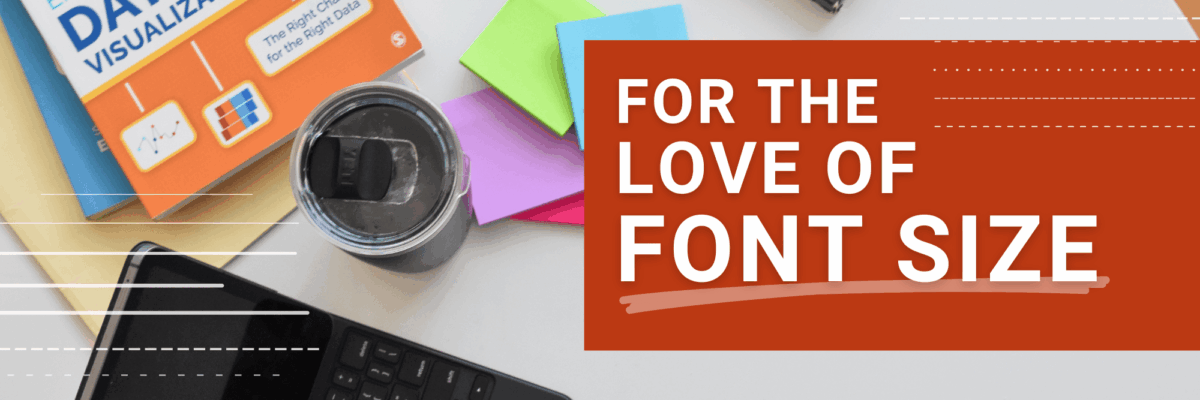For the Love of Font Size
This sentence might make you wanna reach for your readers, but it’s true: You regularly read text set in size 8 font, or even smaller.
In material meant for arm’s length reading (whether that’s in print or digital), captions and less important information such as photograph credits or source information are usually reduced to something between 7.5 to 9 points.
We generally read that size type without much struggle when designers choose an effective font that keeps its clarity and legibility even when tiny.
Designers don’t make the font that tiny to give you a headache. They do it to establish a font hierarchy. Our brains interpret the content set in the biggest size as the most important and the text in the littlest size as the least important. The most important part of the graph, usually its title, should be the largest in size to draw a viewer’s attention first.
Arm’s Length Reading Font Size Hierarchy

For close-ish reading, this chart’s title is size 18 in Roboto Condensed. Largest because it’s the most important.
The axes and annotations are all 12 point, though the annotations are also bolded to make them pop a little more.
The least important text in this graph is the source info. So it’s in a light gray and set to 10 point font.
Of course, if this chart is going to be presented, say, at a conference room where you’ll have some audience members that are more than arm’s length away from the screen, this will all be too tiny.
You see this mistake occur all the time when people export dashboards to PowerPoint slides.
You’ll also see this mistake when graphic designers, who work on their large screens, export a graphic for your slide and the text is so tiny you’re apologizing on it’s behalf in front of your audience.
That Tableau graph will need an entirely different construction if it’s intended home is a slideshow that will be delivered on a large screen.
Large Room Reading Font Size Hierarchy
The smallest font size you can get away with in large room reading circumstances is 20 point.
I’m using 20 point in the y-axis, data labels, and goal annotation.
Which means if I’d needed to include source or note information on this slide, that would have to be in size 20 and my graph’s text would have to be even larger.
My slide title text is 32 points. If you had fewer words, you might want to go bigger.
All of this will mean that you simply can’t put that much on one slide.
Your chart’s final destination will dictate your font size choices, which may mean you have two different versions of the same chart, suitable for close up or distance viewing.
So when you’re rating your graph via the Data Visualization Checklist and you get to the guideline that says text should be hierarchical and readable, rate your work knowing that “readable” depends on the final reading scenario.
Which font to use? I’ve got advice here.



